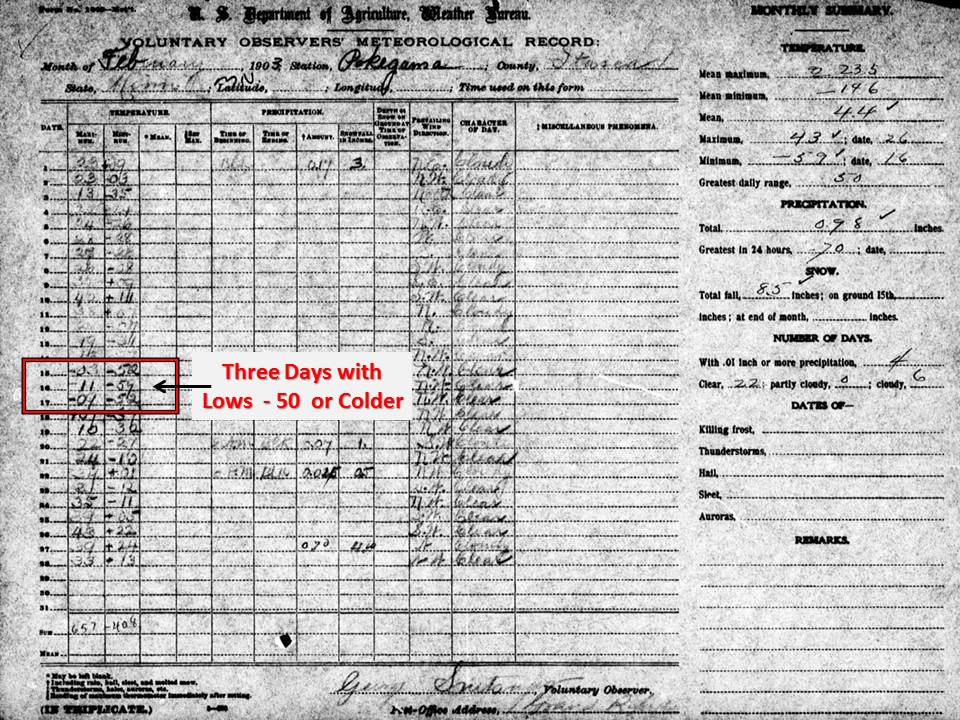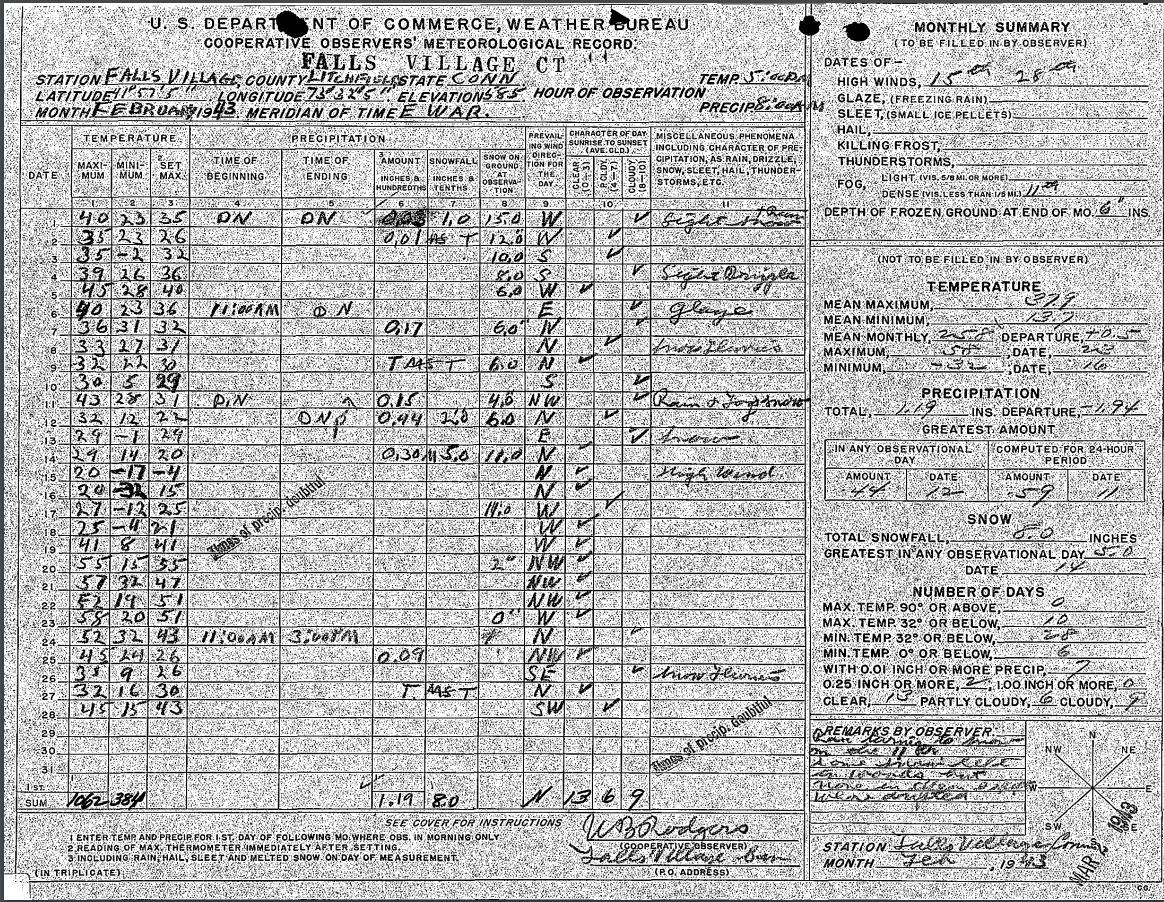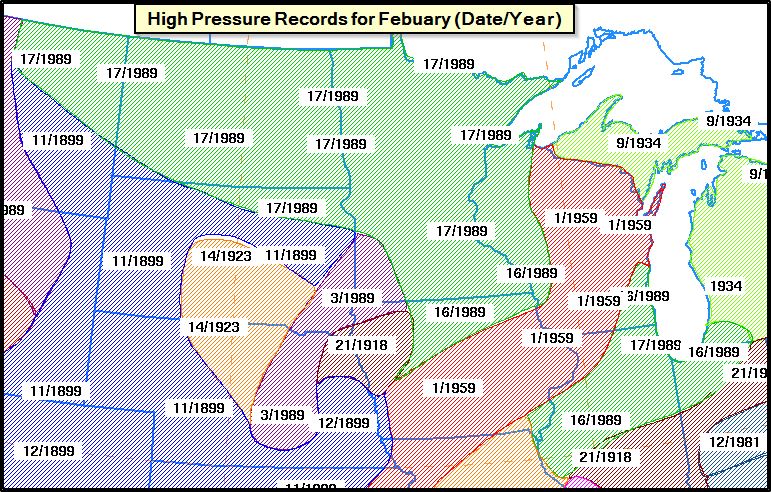Weather History - February 16th
Local and Regional Events:
February 16th, 1969:
Freezing drizzle and thick fog formed a heavy glaze on utility lines resulting in several broken power and telephone lines across northern South Dakota.
U.S.A and Global Events for February 16th:
1898: A series of wildfires swept through South Carolina on February 16-17, 1898. Unconfirmed reports indicate that 14 people were killed, numerous homes and sawmills burned, and up to 3,000,000 acres of forest land were charred from Aiken County, S.C. to Chatham County, N.C., and east to Marlboro County, S.C. There were probably a dozen wildfires raging at the same time driven by a 40 mph wind. Click HERE for more information from North Carolina Digital Collection.
1903: Pokegama Dam, Minnesota saw three straight days with low temperatures 50° below zero or colder, including 59° below zero on the 15th. The minus 59° established a state record for the lowest measured temperature in Minnesota. Pokegama Dam held the record until February 2nd, 1996 when the temperature fell to 60° below zero at Tower.

1943: Record cold prevailed in the northeastern United States. The mercury plunged to 37°F below zero at Concord, New Hampshire, and to -39 degrees at Portland, Maine. The morning low of -32°F at Falls Village, Connecticut, established a state record. The Connecticut record low was tied on January 22nd, 1961, when Coventry fell to -32°F.


1989: A surge of arctic air on February 16-17th produced all-time record high barometric pressure readings of 31.08 inches at Duluth, Minnesota, 30.97 inches at Chicago, Illinois, and 30.94 inches at South Bend, Indiana. Readings of 31.00 inches at Milwaukee, Wisconsin, and 30.98 inches at Rockford, Illinois, tied their all-time records. Unseasonably warm weather prevailed across the southeastern U.S. Highs of 81 degrees at Athens, Georgia, 87 degrees at Charleston, South Carolina, 85 degrees at Macon, Georgia, and 86 degrees at Savannah, Georgia, were records for February.

The image above is from the Weather Prediction Center.
Click HERE for more This Day in Weather History from the Southeast Regional Climate Center.